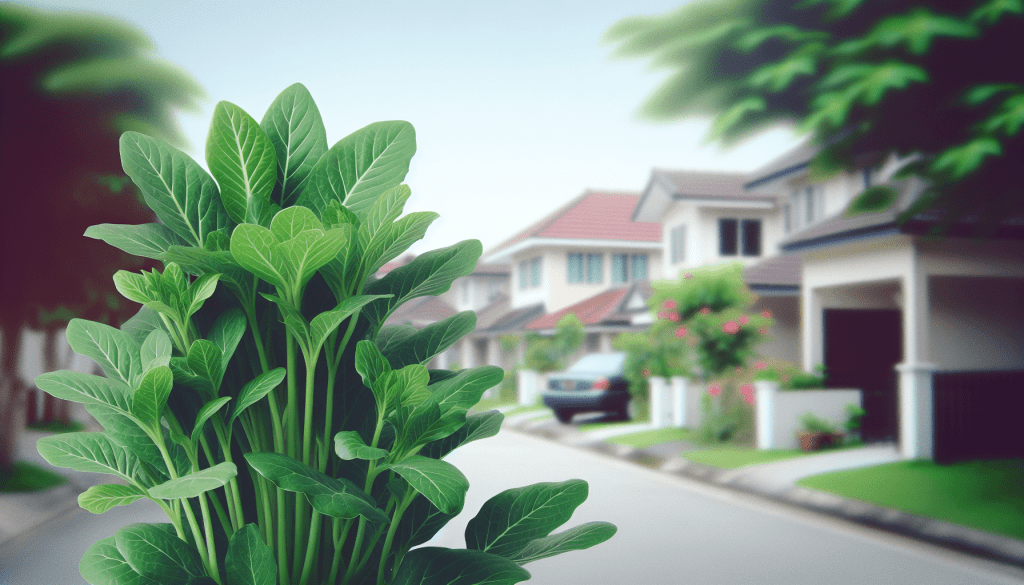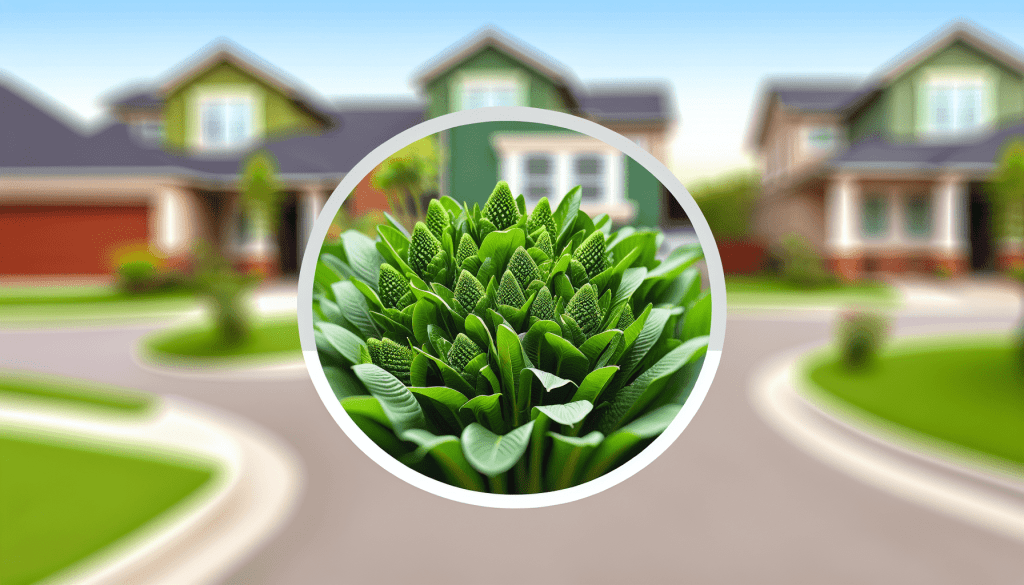If you’ve recently noticed an influx of alligator weed in your neighborhood, don’t worry—you’re not alone, and there are solutions at hand. Alligator weed is an invasive plant that thrives in wet areas, spreading quickly and crowding out native species. This resilient weed can be a challenge, but with the right steps, you can effectively manage and even eradicate it from your local environment. From identifying the growth to implementing practical control methods, this guide will walk you through everything you need to know to reclaim your community spaces. Have you ever noticed an unusual plant taking over your local waterways, backyards, or neighborhood parks? If you’re nodding your head, it’s possible you’ve encountered alligator weed! This invasive species can pose significant problems for both the environment and property owners. So, what should you do if alligator weed is taking over your neighborhood?
What is Alligator Weed?
Before diving into solutions, it’s important to understand what alligator weed is. Alligator weed (Alternanthera philoxeroides) is an invasive aquatic plant native to South America. This perennial plant has smooth, elliptic leaves arranged in opposite pairs and produces small, white, clover-like flowers. It’s highly adaptable and can thrive in both aquatic and terrestrial environments.
Why is Alligator Weed a Problem?
Environmental Impact
Alligator weed is not just another pretty plant; it poses severe threats to local ecosystems. It can form dense mats on water surfaces, thereby blocking sunlight from reaching underwater plants and disrupting the natural habitat for aquatic life.
Economic Concerns
In addition to its environmental impact, alligator weed can also be a financial burden. Its growth can impede water flow in irrigation channels, clog drainage systems, and affect agricultural activities by invading crops and pastures, leading to financial losses.
Recreational and Aesthetic Issues
No one likes to see their favorite fishing spots or local parks taken over by invasive species. Alligator weed can degrade the natural beauty of recreational areas, reducing the quality of life for community residents.

How to Identify Alligator Weed
Identifying alligator weed is crucial for timely intervention. Here’s a quick guide on how to recognize it:
Physical Characteristics
| Feature | Description |
|---|---|
| Leaves | Elliptic, smooth, arranged in opposite pairs |
| Flowers | Small, white, clover-like clusters |
| Stems | Hollow, can be floating or creeping |
| Roots | Spongy and fibrous in aquatic environments; can be shallow-rooted in terrestrial environments |
Seasonal Changes
Alligator weed can look different depending on the time of year. It primarily flowers during the summer but can remain green through the winter in mild climates.
Preventative Measures
Before alligator weed becomes a major problem, taking some preventative measures can be incredibly effective.
Community Education
One of the best ways to prevent the spread of alligator weed is by educating your community. People are less likely to contribute to the problem if they are aware of it. Organize informational sessions, distribute pamphlets, or use social media to spread the word.
Early Detection
The earlier you catch the problem, the easier it will be to manage. Keep an eye out for new growths, especially in water bodies or damp areas where alligator weed can thrive.
Proper Disposal
If you pull out alligator weed from your garden or community area, ensure that you dispose of it properly. Failing to do so can lead to re-infestation or even spread the weed to new areas. Bag it securely and avoid composting it; incineration is often the safest disposal method.

Control and Management Techniques
If alligator weed has already established itself in your neighborhood, don’t panic. There are several effective methods for its control and management.
Mechanical Control
Mechanical control involves manually removing the weed. While this can be effective for small infestations, it is labor-intensive and may not be practical for larger areas.
- Hand Pulling: Effective for small patches but requires persistence.
- Mowing: Can reduce above-ground biomass but usually doesn’t affect the root system.
- Excavation: Best for larger areas but requires heavy machinery and permits.
Biological Control
Biological control involves introducing natural enemies to combat the weed. Some of the most effective biological controls for alligator weed include:
- Alligator Weed Flea Beetle (Agasicles hygrophila):
- Feeds on the leaves, reducing the plant’s growth.
- Alligator Weed Thrips (Amynothrips andersoni):
- Damages the plant by feeding on new shoots.
Chemical Control
Herbicides can be an effective way to manage alligator weed, but they must be used responsibly to minimize environmental impact.
| Herbicide Type | Applicability |
|---|---|
| Aquatic Herbicides | Suitable for water-dominated areas |
| Terrestrial Herbicides | Effective for land-based infestations |
Always consult with a professional for correct herbicide application.
Integrated Pest Management (IPM)
Combining multiple approaches is often the most effective way to combat alligator weed. An Integrated Pest Management (IPM) approach uses mechanical, biological, and chemical methods to control the problem sustainably.
Steps to Implement Control Measures
Step 1: Assessment
The first step in any control plan is assessment. Know the extent of the infestation, the types of environments affected, and potential hazards or restrictions, like local regulations on herbicide use.
Step 2: Planning
After evaluation comes planning. Decide which control methods are most suitable for your specific situation. This may involve consulting experts for advice on mechanical removal, biological agents, or herbicide applications.
Step 3: Implementation
The next step is to put your plan into action. This might include organizing community clean-up days, coordinating with local environmental agencies, or contracting professional pest managers.
Step 4: Monitoring and Evaluation
Once you’ve implemented your control measures, continually monitor the affected areas. Evaluate the effectiveness of your approach and adapt as necessary.

Legal and Regulatory Concerns
Tackling an invasive species often involves navigating a maze of local, state, and federal regulations. Understanding the legal landscape is crucial for effective management.
Permits and Approvals
Depending on your area, you might need permits for certain activities such as digging, herbicide application, or the introduction of biological controls. Check with your local environmental or agricultural agencies.
Reporting
Many regions have reporting systems for invasive species. Reporting infestations can help track the spread and provide valuable data for broader conservation efforts.
Compliance
Ensure that all actions taken comply with local laws and regulations. This is particularly important for chemical treatments, as improper use can result in penalties.
Community Involvement
The fight against alligator weed is most effective when the entire community is involved.
Organize Clean-up Events
Get neighbors and local organizations involved in clean-up efforts. Group activities can make the work faster and more enjoyable.
Educational Workshops
Hold workshops to educate residents on how to identify and manage alligator weed. Knowledgeable residents are more likely to contribute to ongoing control efforts.
Support Networks
Form or join local conservation groups focused on fighting invasive species. These networks can provide valuable resources and support.

Long-term Maintenance
Once you have successfully controlled the current infestation, long-term maintenance is crucial to prevent recurrence.
Regular Monitoring
Make regular inspections part of your routine. Early detection can make future management efforts easier and less costly.
Continuous Education
Keep educating yourself and your community about alligator weed and other invasive species. Staying informed can help prevent new problems from arising.
Engage with Authorities
Stay in touch with local environmental agencies to remain updated on best practices and legal requirements for managing invasive species.
Real-life Case Studies
Sometimes, learning from others’ experiences can be incredibly enlightening. Here are some real-life case studies that illustrate various strategies employed to control alligator weed.
Example 1: Lake County, Florida
In Lake County, an extensive infestation of alligator weed threatened local waterways. The community employed an Integrated Pest Management approach combining biological controls (introduction of the alligator weed flea beetle) and periodic mechanical removal. Within a year, the weed’s presence was significantly reduced, and local biodiversity began to recover.
Example 2: Sydney, Australia
Sydney faced a substantial alligator weed problem in its wetlands. The local government launched a public education campaign and organized community clean-ups. Chemical treatments were used sparingly to target more resilient patches. The combined efforts led to a significant decline in the invasive species, revitalizing the natural habitat.
Example 3: Sacramento, California
Agricultural lands in Sacramento were heavily affected by alligator weed, impacting crop yields. Farmers banded together and coordinated with agricultural agencies to introduce biological controls and use targeted herbicide treatments. Over multiple growing seasons, they were able to reclaim most of the infested land.

Conclusion: Staying Vigilant and Proactive
Alligator weed may be a challenging adversary, but it’s not unbeatable. With diligent effort, proper planning, and community involvement, you can take control and protect your neighborhood from this invasive species. Remember, the key is to stay vigilant and proactive—not just dealing with the weed when it becomes a problem but continuously working to prevent its spread.
Your efforts, no matter how small they seem, contribute to a healthier, more beautiful environment for everyone. Let’s take the first step today!
